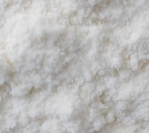| "Descrizione" by Frank123 (12058 pt) | 2023-May-13 21:11 |
Review Consensus: 9 Rating: 9 Number of users: 1
| Evaluation | N. Experts | Evaluation | N. Experts |
|---|---|---|---|
| 1 | 6 | ||
| 2 | 7 | ||
| 3 | 8 | ||
| 4 | 9 | ||
| 5 | 10 |
Phenyl Mercuric Acetate is an organo-mercuric chemical compound
It appears in the form of a white powder.

What it is used for and where
Medical
It acts as a bactericide in parenterals and eye drops and is included in ophthalmological preparations at a concentration of 0.001 - 0.002% and has demonstrated antifungal activity superior to that of amphotericin B and natamycin against a wide variety of ocular pathogenic fungi (1). In the human body it accumulates in the kidneys and brain and is excreted with urine (2).
Cosmetics
It is a restricted ingredient restrizioni V/17 as a Relevant Item in the Annexes of the European Cosmetics Regulation 1223/2009 86/199/EEC. Maximum concentration in the ready-for-use preparation: 0.007% Mercury. When mixed with other mercury compounds authorised by the directive, the maximum concentration of Hg remains at 0.007%.
Preservative. Any product containing organic, inorganic compounds, water, needs to be preserved from microbial contamination. Preservatives act against the development of harmful microorganisms and against oxidation of the product.
Safety
It is considered a skin potential sensitiser (3), ophthalmic (4) although not in high percentages (5).
Other uses
- disinfectant and antifungal agent in agriculture and paints.
- ingredient in the preparation of Agrosan a widely used pesticide for vegetables
 |  |
 |
- Molecular Formula C8H8HgO2 C6H5Hg.C2H3O2
- Molecular Weight 336.74 g/mol
- CAS 62-38-4
- UNII OSX88361UX
- EC Number 200-532-5
References_____________________________________________________________________
(1) Xu, Y., Zhao, D., Gao, C., Zhou, L., Pang, G. and Sun, S., 2012. In vitro activity of phenylmercuric acetate against ocular pathogenic fungi. Journal of antimicrobial chemotherapy, 67(8), pp.1941-1944.
(2) Millichap, J., 1990. Mercury Poisoning and Latex Paint. Pediatric Neurology Briefs, 4(11).
(3) Grey, K.R. and Warshaw, E.M., 2016. Allergic contact dermatitis to ophthalmic medications: relevant allergens and alternative testing methods. Dermatitis, 27(6), pp.333-347.
(4) Herbst RA, Uter W, Pirker C, Geier J, Frosch PJ. Allergic and non-allergic periorbital dermatitis: patch test results of the Information Network of the Departments of Dermatology during a 5-year period. Contact Dermatitis. 2004 Jul;51(1):13-9. doi: 10.1111/j.0105-1873.2004.00334.x.
Abstract. Periorbital dermatitis is common and can be due to the external use of ophthalmic drugs. We evaluated patch test results of the Information Network of the Departments of Dermatology. During a 5-year period (1995-99), of a total 49,256 patch-tested patients, 1053 (2.1%) were eventually diagnosed as allergic periorbital contact dermatitis (APD) and 588 (1.2%) as non-allergic periorbital dermatitis (NAPD). Patient characteristics between APD, NAPD and other cases (OCs) differed with respect to sex (19.7% male in both periorbital groups versus 36.3% in OCs), atopic dermatitis (10.4% in APD versus 60.2% in NAPD versus 16.9% in OCs) and age, APD being substantially more often (68.2%) aged 40 and above than NAPD (52.6%). Several of the top allergens in OCs [such as fragrance mix, Myroxylon pereirae resin (balsam of Peru), lanolin alcohol and potassium dichromate] caused significantly fewer positive test reactions in both periorbital groups. In contrast, thimerosal, phenylmercuric acetate, sodium disulfite, gentamicin sulfate, phenylephrine hydrochloride and benzalkonium chloride tested positively significantly more often in APD but not in NAPD, verifying them as true ophthalmic allergens. Finally, in 42 cases (4%) of APD patients, additional allergens were identified by testing of the patients' own substances (mostly beta-blockers, oxybuprocaine and dexpanthenol), supporting the necessity of testing with ophthalmic drugs as is where individual substances are not readily available.
(5) Landeck, L., John, S.M. and Geier, J., 2014. Periorbital dermatitis in 4779 patients–patch test results during a 10‐year period. Contact Dermatitis, 70(4), pp.205-212.
| Evaluate |

